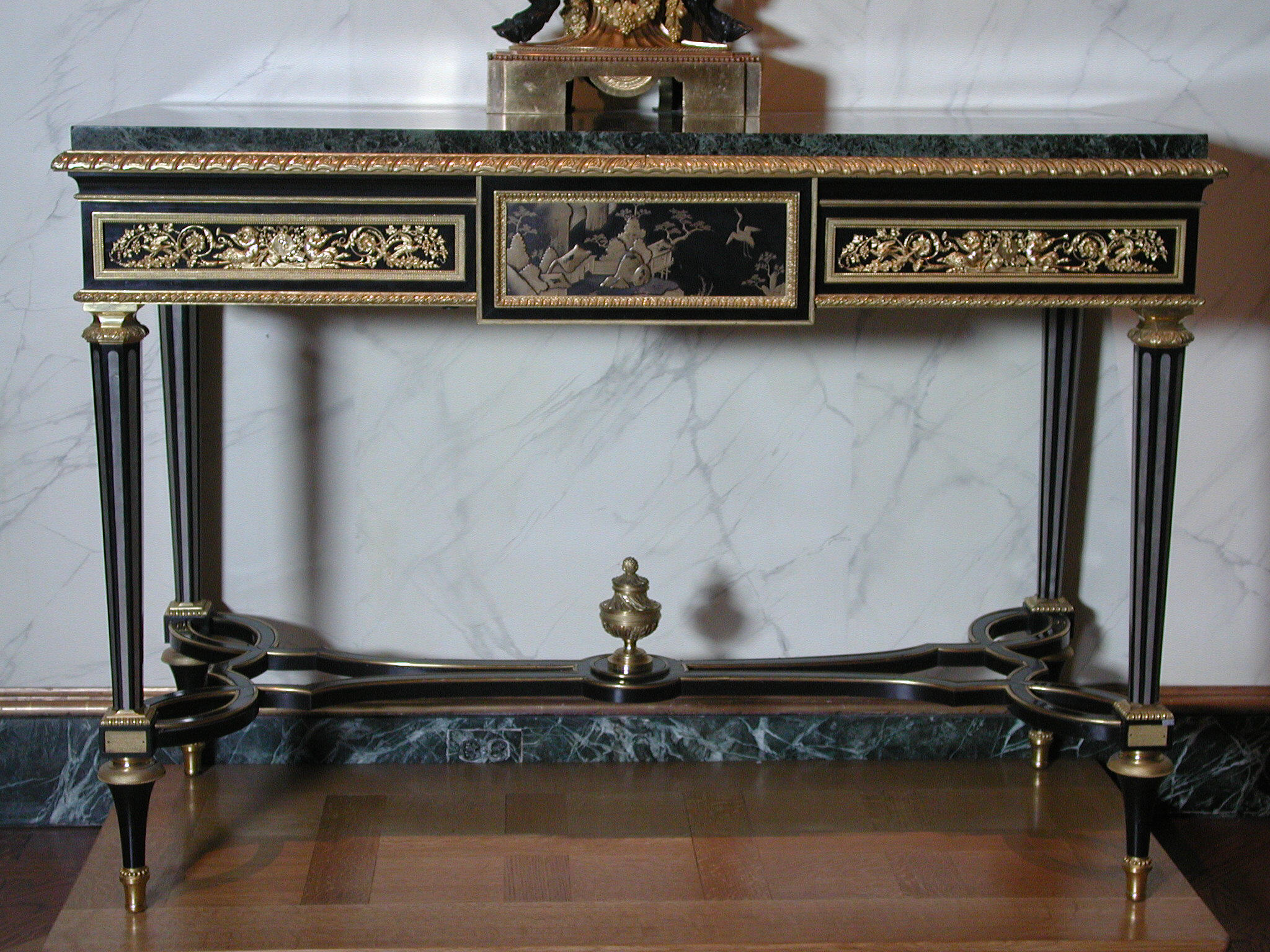Table
Attributed to Adam Weisweiler French
This side table demonstrates the persistent taste for the exotic and Chinoiserie during the reign of Louis XVI, a period more typically defined by the restrained Neoclassical forms inspired by ancient Rome and Greece. Attributed to the famed Parisian cabinetmaker Adam Weisweiler, the oak table is veneered with ebony, incorporates panels of black and gold Japanese lacquer, and is set with strips of pewter and gilt-bronze mounts. It has a marble top. A small drawer is located in the frieze, and the four tapered octagonal legs are joined by an interlacing stretcher mounted with a gilt-bronze urn (possibly a replacement). The central lacquer panel located in the frieze, paired with the two gilt-bronze panels featuring fauns and trophies, demonstrates how furniture under the reign of Louis XVI combined lacquer from the Far East with classical motifs from antiquity. Seen with the museum’s vases chinois, a pair of vases produced around 1791 at Sèvres that sought to mimic the effects of black lacquer (1971.206.23), this desk typifies the black and gold aesthetics that briefly prevailed in the last decades of the ancien régime
Due to rights restrictions, this image cannot be enlarged, viewed at full screen, or downloaded.
This artwork is meant to be viewed from right to left. Scroll left to view more.



